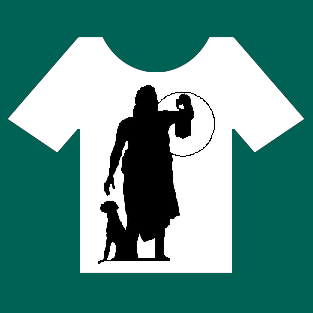
Geoffroy aged about 70
, the historical debate that took place at the French Academy of Sciences between Georges Cuvier and Etienne Geoffroy Saint-Hilaire began.
The zoologist and historian of science E.R. Russell summed up the great biological controversy of the first half of the nineteenth century: “Is function the mechanical result of form, or is form merely the manifestation of function or activity? What is the essence of life — organization or activity?” While Cuvier founded the “functionalist” school of organismal biology, with his insistence on animals as functionally integrated wholes, Geoffroy continued the more “formalist” tradition of biology that had started with Buffon and was being continued by Goethe, Lamarck, and others.
Cuvier viewed every part of an animal as having been designed by the Creator to contribute to the animal’s functional integrity. Thus, similarities between organisms could only result from similar functions, writing in 1828, “If there are resemblances between the organs of fishes and those of the other vertebrate classes, it is only insofar as there are resemblances between their functions.” Cuvier argued that all animals could be subdivided into four and only four distinct embranchements: vertebrates, molluscs, articulates (insects and crustaceans), and radiates.
Cuvier’s viewpoint is diametrically opposed to Geoffroy’s view, which stressed the primacy of structure over function; Geoffroy wrote in 1829: “Animals have no habits but those that result from the structure of their organs; if the latter varies, there vary in the same manner all their springs of action, all their faculties and all their actions.”
Geoffrey said that unity of plan could be identified by the relative positions and spatial interrelationships of elements, rather than primarily by their shape or size. Parts may expand and contract according to their function, but topology remains unaltered, and the archetype can be traced by an unvarying spatial pattern. He called this the principle of connections. (This is still a favored basis for recognizing anatomical homologies.)
Geoffroy wrote in 1807 (see Appel, 1987, p. 89):
It is known that nature works constantly with the same materials. She is ingenious to vary only the forms…One sees her tend always to cause the same elements to reappear, in the same number, in the same circumstances, and with the same connections.
As Charles Darwin described his work in 1859, in The Origin of Species:
What can be more curious than that the hand of a man, formed for grasping, that of a mole for digging, the leg of the horse, the paddle of the porpoise, and the wing of the bat, should all be constructed on the same pattern, and should include the same bones, in the same relative positions? Geoffroy St. Hilaire has insisted strongly on the high importance of relative connexion in homologous organs: the parts may change to almost any extent in form and size, and yet they always remain connected together in the same order.
In 1822, Geoffroy had dissected a lobster and placed it in an inverted position with respect to the ground. In this upside down orientation the lobster’s normally ventral nerve cord was located above the digestive tract, which in turn was placed above the heart. In his own words: “What was my surprise, and I add, my admiration, in perceiving an ordering that placed under my eyes all the organic systems of this lobster in the order in which they are arranged in mammals?” Geoffroy went on to argue that there was a unity of plan, or unity of composition, among animals, so that the dorsal side of the vertebrates was homologous to the ventral side of the arthropods. In 1822, he wrote that “insects formed another class of vertebrated animals, and that they were, consequently, brought under the common law of uniformity of organization”.
Thus, Geoffroy and his followers argued that all animals, vertebrates and invertebrates alike, were built on the same basic plan. Therefore, animal life could be strung into a more or less continuous, related series, rather than broken into discrete “divisions”, as Cuvier had claimed. This series implied that the history of each organism, rising in complexity from starfish to humans, could be interpreted in an evolutionary manner.
Matters between Cuvier and Geoffry came to a head in 1830, when two young naturalists, Meyranx and Laurencet, presented a comparison of the anatomy of vertebrates and cephalopods (squids, cuttlefish, and octopi), claiming that they were based on the same basic structural plan. Geoffroy enthusiastically adopted this claim as proof of the unity of plan shared by all animals; Cuvier could not reconcile it with the results of his careful anatomical research. Thus was set up one of the most famous debates in the history of biology: eight public debates between Cuvier and Geoffroy, from February to April 1830. In these debates, Cuvier showed convincingly that many of Geoffroy’s supposed examples of unity of structure were not accurate; the similarities between vertebrates and cephalopods were contrived and superficial.

Generalized protostome and chordate body plans illustrating inversion in the two lineages.
Remarkably, Geoffroy’s idea today is supported by a growing body of molecular developmental evidence. Holley
et al (1995) have demonstrated that not only do the fruit fly and frog have homologous genes that promote dorsoventral patterning, but the homologous genes have opposite effects within each animal. In fact, the genes are functionally interchangeable –- even though the product of sog ventralizes fly embryos, it dorsalizes frog embryos just like its homologue in the frog, chordin.
It would be an error to call Geoffroy an evolutionary biologist in anything like the modern sense. Archetypes were abstractions, not once-living ancestors; shared archetypal form did not necessarily indicate common ancestry. Geoffrey used the term “homologous” in its anatomical sense, meaning those parts in different animals which were “essentially” the same, even though the parts might have different shapes and functions. However, later in his career, Geoffroy published some ideas that resemble the theory of evolution by natural selection. The following quote from “Influence du monde ambiant pour modifier les formes animales” (1833) shows that Geoffroy considered that heritable changes in an organism might be selected for or against by the environment, and thus that present-day species might have arisen from antediluvian (before the Biblical Flood) species:
The external world is all-powerful in alteration of the form of organized bodies.. . these [modifications] are inherited, and they influence all the rest of the organization of the animal, because if these modifications lead to injurious effects, the animals which exhibit them perish and are replaced by others of a somewhat different form, a form changed so as to be adapted to the new environment.
But these ideas apparently were never a key part of Geoffroy’s thought. Geoffroy believed that there were limits to how far an organism might evolve, and he never developed his ideas into a complete theory, as Darwin later did.
Part of the power of modern evolutionary biology comes from its ability to synthesize elements from both schools of thought. Organismal lineages change with time, in response to changing environments, and their form constrains the functions that they can take on; at the same time, it is the ability of organisms to function in their environments that is a major component of evolutionary fitness, and form is often altered to fit a particular function. Cuvier and Geoffroy had grasped separate parts of a more complex reality.
References:
- Toby A. Appel. The Cuvier-Geoffrey Debate: French Biology in the Decades before Darwin (Oxford University Press, 1987).
- Stephen J. Gould, The Structure of Evolutionary Theory (Harvard University Press, 2002) pp. 298-312.
- S.A. Holley, P.D. Jackson, Y. Sasal, B. Lu, E.M. De Robertis, F.M. Hoffmann, and E.L. Ferguson. A conserved system for dorsal-ventral patterning in insects and vertebrates involving sog and chordin, Nature 376: 249-253 (1995).
- Ernst Mayr. The Growth of Biological Thought: Diversity, Evolution and Inheritance (Cambridge, MA: Harvard Univ. Press, 1982) p 262.





















































You must be logged in to post a comment.